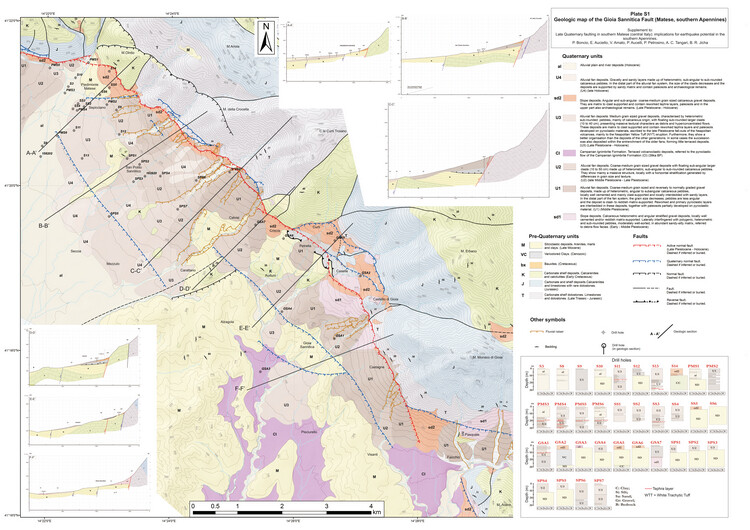
Late Quaternary faulting in southern Matese (central Italy): implications for earthquake potential in the southern Apennines
Boncio, P., Auciello, E., Amato, V., Aucelli, P., Petrosino, P., Tangari, A. C., and Jicha, B.:
Solid Earth Discuss. [preprint], SED - Late Quaternary faulting in southern Matese (central Italy): implications for earthquake potential in the southern Apennines, in review, 2021.
Abstract
We studied in detail the Gioia Sannitica active normal fault (GF) along the Southern Matese Fault system in the southern Apennines of Italy. The current activity of the fault system and its potential to produce strong earthquakes have been underestimated so far, and are now defined. Precise mapping of the GF fault trace on a 1 : 20,000 geological map and several point data on geometry, kinematics and throw rate are made available in electronic format. The GF, and in general the entire fault system along the southern Matese mountain front, is made of slowly-slipping faults, with a long active history revealed by the large geologic offsets, mature geomorphology, and complex fault pattern and kinematics. Present activity has resulted in Late Quaternary fault scarps resurrecting the foot of the mountain front, and Holocene surface faulting. The slip rate varies along-strike, with maximum Late Pleistocene – Holocene throw rate of ~0.5 mm/yr. Activation of the 11.5 km-long GF can produce up to M 6.1 earthquakes. If activated together with the 18 km-long Ailano-Piedimonte Matese fault (APMF), the seismogenic potential would be M 6.8. The slip history of the two faults is compatible with a contemporaneous rupture. The observed Holocene displacements on the GF and APMF are compatible with activations during some poorly known historical earthquakes, such as the 1293 (M 5.8), 1349 (M 6.8; southern prolongation of the rupture on the Aquae Iuliae fault?) and CE 346 earthquakes. A fault rupture during the 847 poorly-constrained historical earthquake is also compatible with the dated displacements.
Visualizza preprint (4273 KB)
Supplement - Geologic map of the Gioia Sannitica Fault, Matese, southern Apennines (29891 KB)
© Author(s) 2021. This work is distributed under the Creative Commons Attribution 4.0 License.